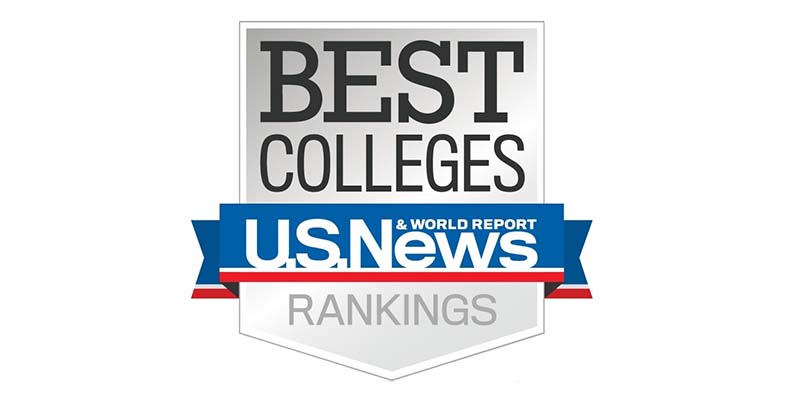
10 Best Global Universities in Europe | Europe's Highest Ranked Universities
Each nation has a higher education system that is nationally managed, but in Europe, they are all a part of the European Higher Education Area (EHEA). The EHEA system contributes to the compatibility of higher education systems across Europe and facilitates collaboration and easier study and employment abroad for European students, scholars, and researchers.
There are nations in Europe that have higher education systems that distinguish between research Universities, universities of applied sciences, and higher education institutions. The practical application of the arts and sciences is spread mainly by applied science universities. Research-focused programs are offered in academic settings by research universities.
These universities in Europe have been rated numerically based on their place in the Global Universities rankings. Each university was assessed based on the quality of its research and the opinions of academics from the area and worldwide. Below are the top European universities for your reference.
2023's top universities in Europe! Gain insightful knowledge about the best university in Europe
1. University of Oxford
Wellington Square, Oxford OX1 2JD United Kingdom
GLOBAL SCORE-86.8

Source: University of Oxford
Each college at the University of Oxford is independent and self-governing, and each one has a charter that has been authorized by the Privy Council. Each college is run by a Head of the House who is chosen and elected by the governing body. Most of the Fellows on the governing body are also employed by universities. Four academic departments make up Oxford University. There are various departments, faculties, and schools contained within these divisions. The museums, libraries, and collections at Oxford serve as a superb resource for the university and closely collaborate with the divisions to give instruction. At Oxford, research is conducted in the humanities, medical, social, mathematical, physical, and biological sciences. Three terms, Michaelmas (autumn), Hilary (spring), and Trinity (summer), each lasting eight weeks, make up Oxford's academic year. English is the fundamental language of instruction at Oxford University.
2. University of Cambridge
Trinity Lane, Cambridge CB2 1TN United Kingdom
GLOBAL SCORE-86.1

Source: University of Cambridge
Cambridge University is about 60 miles north of London. Over 35% of the university's approximately 19,000 students are graduate students. There are six schools: technology, clinical medicine, biological sciences, humanities, social sciences, and arts and humanities. These schools are made up of numerous academic departments and other divisions. Michaelmas (fall), Lent (winter), and Easter are the three terms that makeup Cambridge's academic year (spring). At the university, English is the language of instruction. Three of Cambridge's 31 residential colleges—Lucy Cavendish College, Murray Edwards College, and Newnham College—are exclusively for women and are in charge of enrolling undergraduate and graduate students.
Database of School, College, & Universities List Counts
3. University College London
Gower Street, London WC1E 6BT United Kingdom
GLOBAL SCORE-84.4

Source: University College London
After the Universities of Oxford and Cambridge, it was the third institution to be founded in England. UCL has sites in Qatar and Australia in addition to its main campus in the heart of London. UCL also has other kinds of connections with universities throughout the world, like the University of Montreal in Canada and Zhejiang University in China, in addition to exchange and research arrangements. Around 150 different nations send students to UCL. Undergraduate first-years are guaranteed housing on campus. There are three terms in the academic year at UCL, and English is the medium of instruction.
4. Imperial College London
Exhibition Road, London SW7 2AZ, United Kingdom
GLOBAL SCORE-84.3

Source: Imperial College London
This university was formerly a college of the University of London, which separated from the university in 2007. The institution, which focuses on science, has several campuses in and near London. The main campus is in South Kensington, a neighborhood in Central London where other cultural institutions, such as the Natural History Museum, are also located. Imperial University has more than 15,000 students. First-year undergrads are guaranteed lodging facilities, and graduate student housing is offered on the campus of Silwood Park, which is around 25 miles west of Central London.
5. ETH Zurich
Rämistrasse 101, Zurich CH-8092 Switzerland
GLOBAL SCORE-79.3

Source: ETH Zurich
The institution comprises 16 departments that provide academic instruction and conduct scientific research in fields ranging from engineering and architecture to chemistry and physics. Its full name is the Swiss Federal Institute of Technology Zurich in English. Most degree programs at ETH Zurich are built on solid mathematical foundations and integrate sound theory with real-world applications. German is the primary language of instruction for undergraduate students, whereas English is the language of choice for master's and doctorate programs. ETH Zurich has two central locations: the heart of Zurich and a contemporary campus constructed on a hill outside the city.
6. King's College London
Strand, London WC2R 2LS United Kingdom
GLOBAL SCORE-77.9

Source: King's College London
According to the 2016–17 QS World University Rankings, King's College of London is one of the top 25 universities in the world and one of the oldest in England. More than 27,600 students, including approximately 10,500 graduate students from 150 different countries, attend King's, together with 6,800 staff members. In the humanities, law, sciences, and social sciences, including international affairs, King's has a particularly illustrious reputation. King's Health Partners Academic Health Sciences Centre (AHSC) is a ground-breaking global partnership between three of London's most prosperous NHS Foundation Trusts, including premier teaching hospitals and comprehensive mental health services, and one of the world's top research-driven universities.
Education Marketing Resources
- 2023 Best Global Universities: Top 50
- The Metaverse In Education - Lessons Get Converted Into Virtual Reality
- Why Online Learning is the Future of Education in 2023
- Best universities in the UK 2023 - University Rankings
- The Top Five Critical Issues Facing Educators in 2023
- 10 Marketing Strategies to Attract More Students in 2023
- 2023 Best Public Elementary Schools in America
- 2023 Best Boarding High Schools in America
7. University of Edinburgh
Old College, South Bridge, Edinburgh, Scotland EH8 9YL United Kingdom
GLOBAL SCORE-77.8

Source: University of Edinburgh
It is dispersed across five campuses in Edinburgh, Scotland, the capital and biggest city in the country. The main administrative structures, the library, and the humanities and social science facilities are located on the university's Central Area Campus. The other locations are the King's Buildings, Easter Bush, Little France, and Western General Hospital campuses. The university contains three colleges with 20 schools: arts, humanities, and social sciences; medical and veterinary medicine; and science and engineering. The university uses a semester-based academic schedule, and English is the primary instruction medium. Students interested in learning more about the historical language of Scotland can sign up for free, six-week introductory Gaelic sessions.
8. University of Amsterdam
Spui 21, Amsterdam 1012 WX Netherlands
GLOBAL SCORE-76.8

Source: University of Amsterdam (UvA)
The university is distributed across four sites in the Netherlands: the Academic Medical Center, the City Center Campus, the Roeterseiland Campus, and the Amsterdam Science Park. More than 30,000 students attended the university in recent years. The university reserves a certain proportion of rooms for overseas students. The university's seven academic departments are dentistry, economics, business, law, humanities, medical, science, social, and behavioral sciences. The academic year is divided into semesters at the school. Although some programs are taught in English, most bachelor's programs are taught in Dutch.
9. University of Copenhagen
Nørregade 10, Copenhagen 1165 Denmark
GLOBAL SCORE-76.2

Source: University of Copenhagen
The University of Copenhagen (UCPH), one of the most significant research and educational institutions in the Nordic nations, has over 40,000 students and over 9,000 employees. UCPH is ranked number 20 in Europe and 1 in the Nordic area in the 2016 QS World University Rankings. The University of Copenhagen is a part of some of the world's most prestigious international research alliances, including LERU and IARU. The university has collaborations with businesses in the private sector, including VELUX, Microsoft, Novo Nordisk, Novozymes, and GlaxoSmithKline. To transfer laboratory findings to society, brilliant researchers work together. Additionally, UCPH enters into about 800 collaboration agreements with both public and private enterprises annually.


